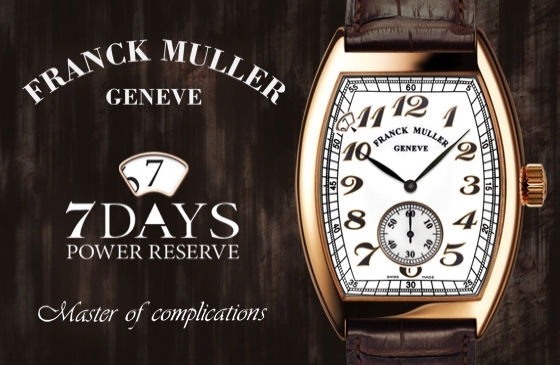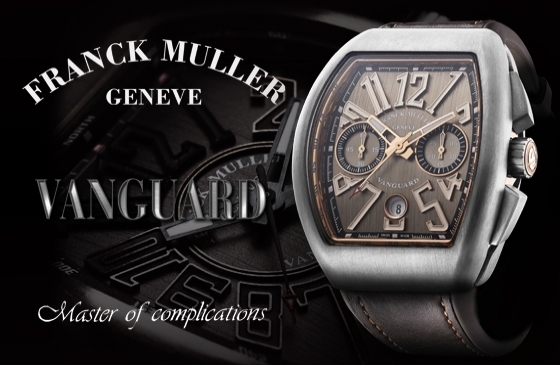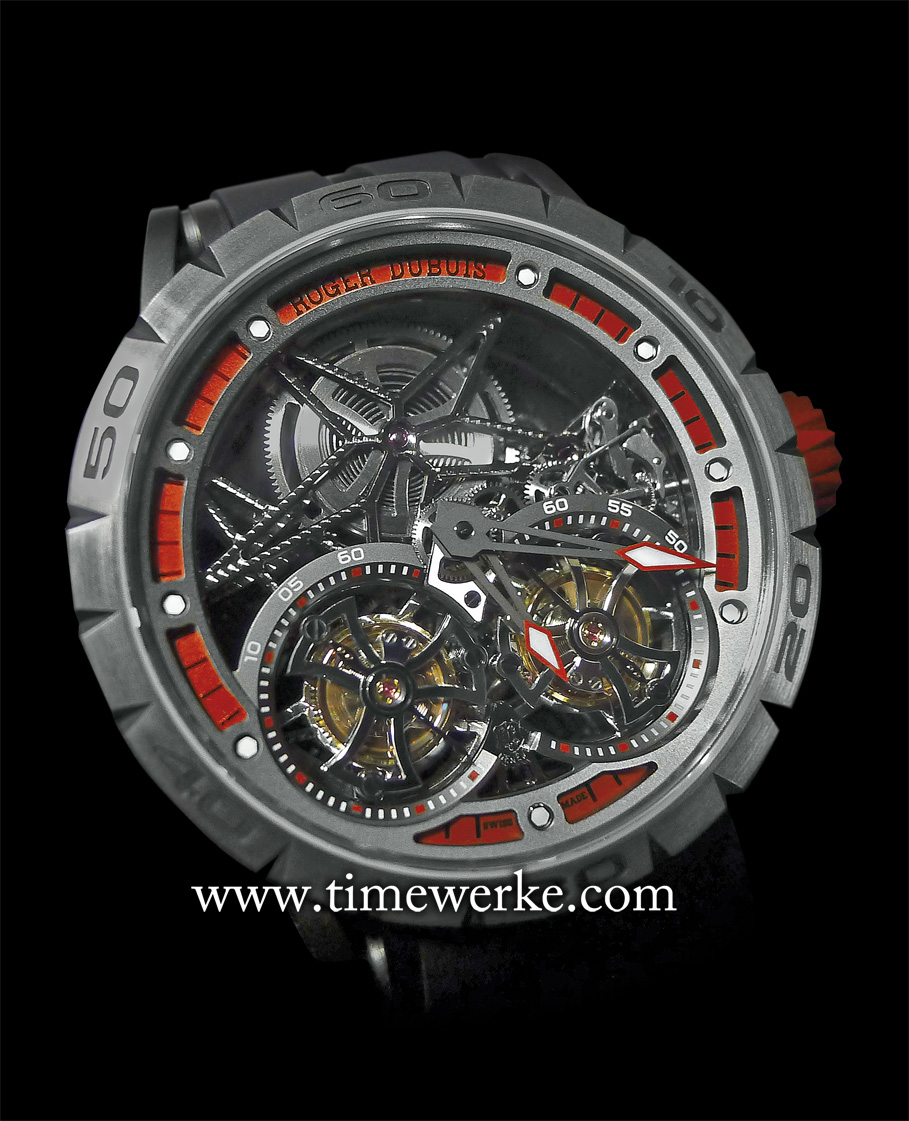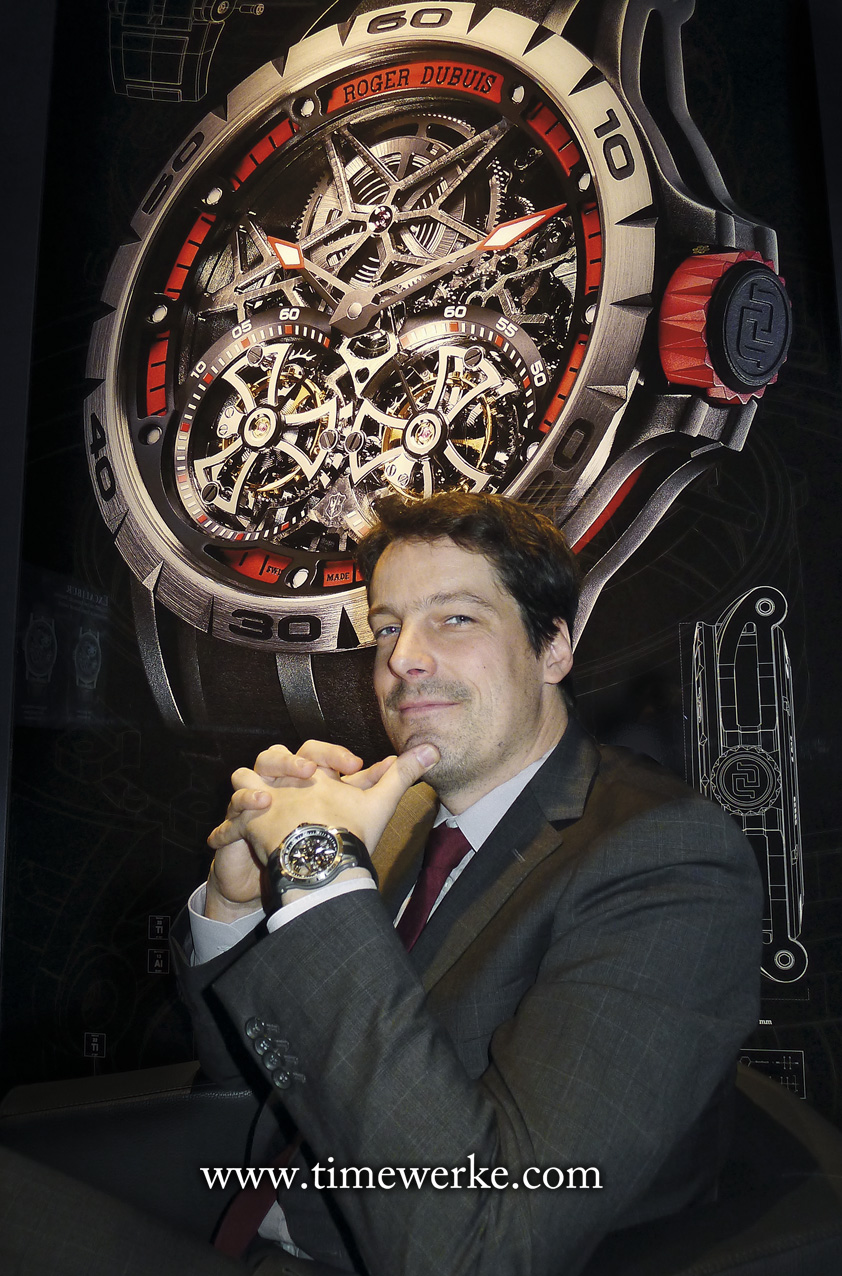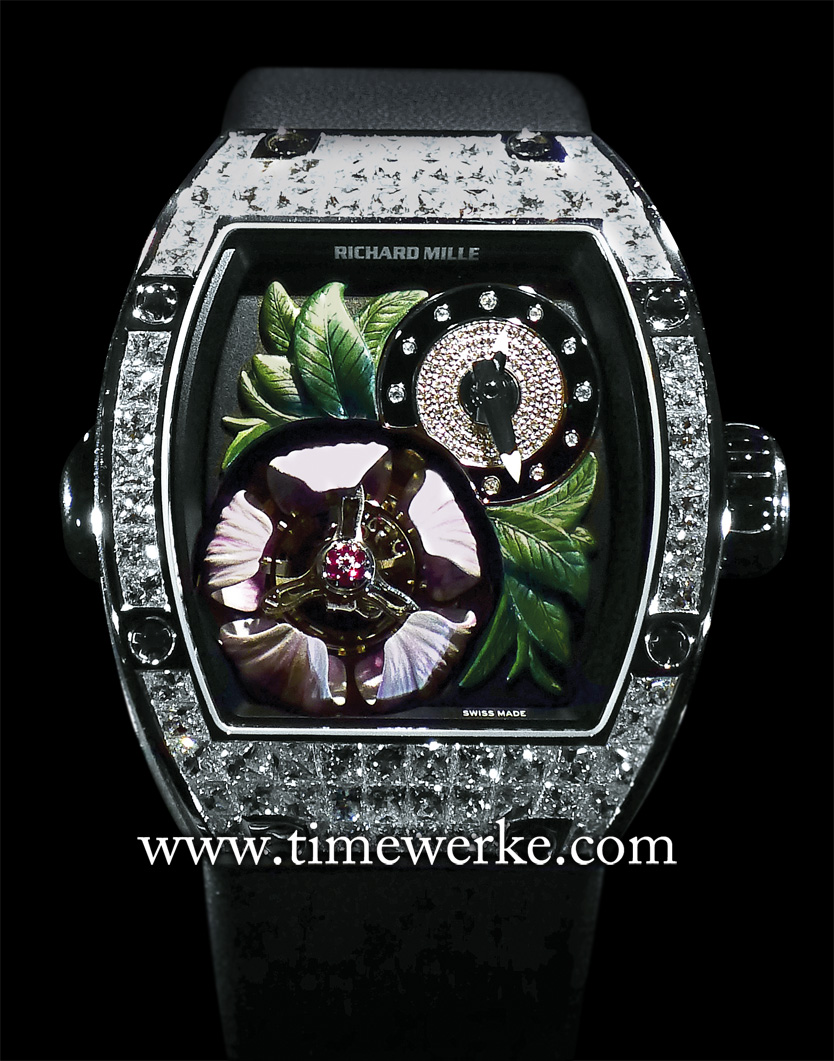
Richard Mille RM19-02 Tourbillon Fleur. Introduced in 2015, it features the flying tourbillon with an automaton mechanism. The magnolia flower is between six o’clock and nine o’clock. The flying tourbillon is under five flower petals of the magnolia flower and it blooms in passing every five minutes. The petals are open in the above image. The flower can also bloom on demand via activation of the pusher at nine o’clock. Limited to 30 pieces. Photo: © TANG Portfolio. Elfa / Timmy. 2015 Salon International de la Haute Horlogerie.
The flower you see towards the left on the Richard Mille RM 19-02 Tourbillon Fleur is no ordinary flower. In fact, it is an exceptional one.
That is because it is a magnolia flower. “The magnolia was chosen as its existence marks millions of years on Earth even before the emergence of bees within the environment, flowering in an endless cycle of birth and regeneration.
“The magnolia’s delicate appearance stands in sharp contrast to its strong organic structure and resilience in difficult environments,” explains the brand.
Time should be taken to appreciate the Richard Mille RM 19-02 Tourbillon Fleur for the magnolia flower surrounding the tourbillon “with five delicate, hand-created and coloured petals” will open and close either in passing or on demand via activation of the pusher at 9 o’clock.
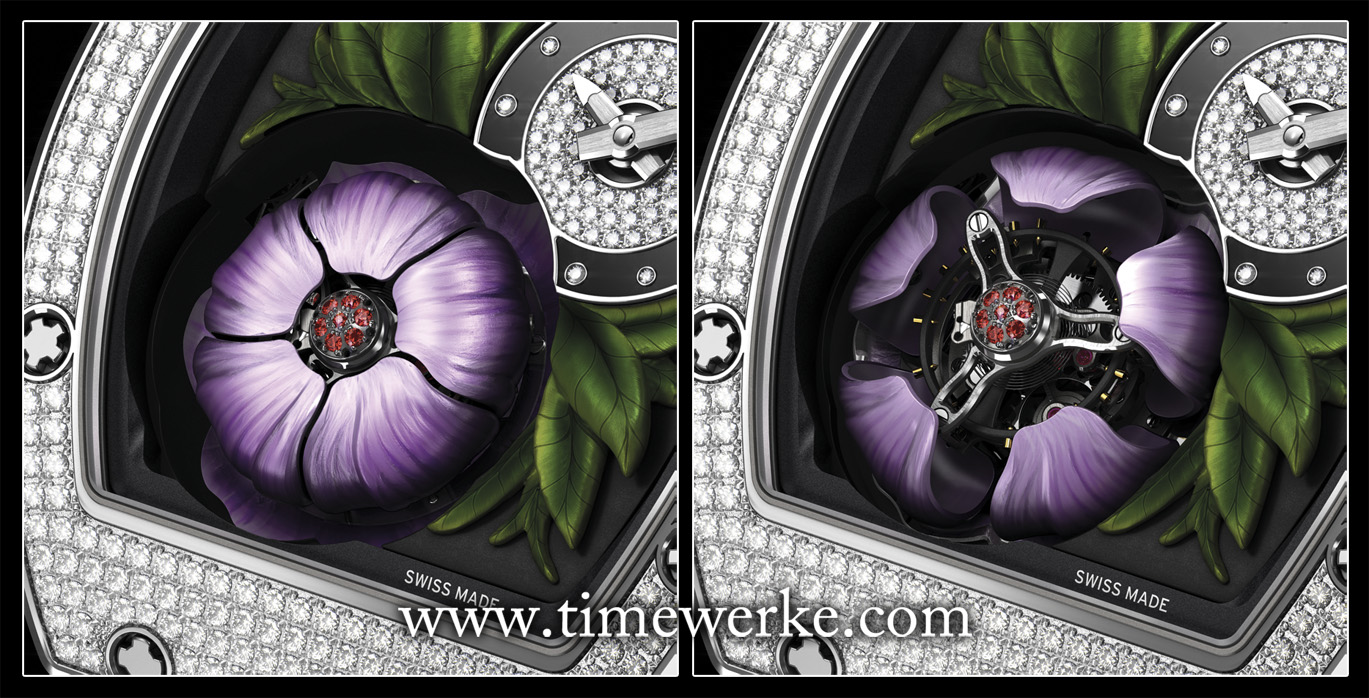
The magnolia flower in a closed position will “hide” the flying tourbillon beneath (left). The magnolia flower will bloom every five minutes (right). As all five petals open, the flying tourbillon with its stone-set “stamen” will rise by one millimetre. Photo: © Richard Mille.
Left by itself, the magnolia will open (bloom) and close “with rhythmic regularity in a delicate kinetic ballet”, as described by the brand.
What we recommend is to carefully observe this mechanical magnolia as it blooms because the brand has chosen to mimick nature “… in the most exquisitely extreme manner possible.
“The magnolia does not just open, the entire flying tourbillon with its stone-set stamen actually moves upwards by one millimetre when fully opened, exactly copying the natural motion of the flower arching upwards of its stamen to increase its chances of pollination”.
Speaking of improving the odds, the Richard Mille booth at the 2015 Salon International de la Haute Horlogerie held in Geneva was manned, or should we say “wo-manned” by at least two very sexy ladies decorated with flowers to attract the “birds and the bees”.
Thankfully, we didn’t hear of any incidents involving “beasts” (pun intended).

One of the female models decorated with flowers seen within the Richard Mille booth at the 2015 Salon International de la Haute Horlogerie. And yes, she is wearing a Richard Mille wristwatch. Photo: © TANG Portfolio.
To attract more visitors to the Richard Mille booth, there were two other ladies, also decked in flowers, who were walking around the fairgrounds, distributing flowers to the visitors.
We view such extra attention as positive as the Richard Mille RM 19-02 watch, limited to only 30 pieces, is definitely worth viewing. The flower ladies were wearing Richard Mille watches such as the diamond-set RM 007.
The “secret” behind the mechanical magnolia flower is a complex mechanism comprising five levers surrounding the underside of the petals and another system combined with a long pinion that is used to raise the flying tourbillon and stamen upwards within the flower’s circumference.
All the energy required comes from a second separate winding barrel. According to the brand, adjusting the opening and closing cycles is possible.
As for the flowering cycle on the RM 19-02, the five petals in 18K gold enter into “full bloom” every five minutes to reveal the flying tourbillon which rises as well. In addition, viewing of the “full bloom” can be made on demand, thanks to the pusher at 9 o’clock.


